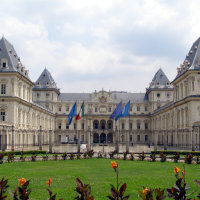SEEMPUBS: maximum energy savings with minimum intervention for historic buildings
The FP7-funded SEEMPUBS(opens in new window) project has developed a new computer-based system that can control lighting, heaters, air conditioners and other environmental units in large buildings. The SEEMPUBS technology includes a central control software system connected wirelessly to energy structures placed in different parts of a building or even a number of buildings. Professor Enrico Macii(opens in new window) of the Polytechnic University of Turin(opens in new window) says that ‘beyond any actual hardware, the most significant result has been the elaboration of an energy-efficient model for existing buildings and public spaces. This model can be applied to many different historic buildings where legacy energy systems are already in place, avoiding expensive construction work, disruption and possible damage.’ The functionality of this system is already being demonstrated on existing buildings at the Politecnico Campus, and the Valentino Castle. By comparing reference and test rooms, average weekly savings ranging from 27% to 36% have been observed in heating energy in winter period. These savings ranged from 63% to 74% for cooling energy in summer period. A great economic potential Light, temperature and humidity in such buildings are often difficult to control. ‘Typically, these historic buildings have individual heaters and air conditioning units in the different rooms,’ Macii says. ‘There is no central environmental control. So someone has to walk around to the different rooms, read temperature gauges and other sensors, and then adjust the heating and other units manually.’ The SEEMPUBS systems draws together building services, electronic devices, and operations in order to optimise and integrate all maintenance functions. When possible, existing building management systems are left in place, while new hardware allowing fine-grained monitoring and control can be added. The SEEMPUBS operator can actually visualise different spaces and navigate through a building virtually, overseeing the entire interlinked system of environmental and energy control The project has also developed a handheld app allowing users to visualise and inspect various environmental systems as they walk through a building, providing real time light, temperature, humidity and other data as well as architectural and structural information. The project partners believe that the economic potential is significant, including the creation of a market for ICT-based solutions that integrate new and existing technologies, and opening doors to new services, from the design of customised systems to operations and maintenance. One of the project partners is currently working on a commercial version of the methodology, including a beta-release of the supporting software. Another partner is also exploiting some of the outcomes of the project, namely those concerning sensor technologies, to enhance its portfolio of sensor devices devoted to ambient sensing and monitoring. Finally, the features of the SEEMPUBS methodology are currently being extended for applicability at the district level in the context of another EU-funded R & D project, DIMMER(opens in new window) . The project also sees a new collaborative framework ultimately taking shape between the ICT and building and construction sectors, exploiting opportunities for the development of ICT-based systems in compliance with the EU’s Energy Performance of Buildings Directive(opens in new window) . ‘We are doing all of this while at the same time achieving more efficient and sustainable operations,’ Macii says. ‘The result is reduced energy consumption, cost savings and a ‘greener’ overall environmental performance. We also want to raise citizen awareness, especially among youngsters, of the positive impact new technologies can have over the mid- to long-term. For this, we have developed a game named SEEMPubSDice using augmented reality technologies and a theatre show entitled ToBeSmart.’ The game allows players to interact with elements of the project (wireless sensors, temperature sensors, light bulbs, old electric wires etc.) and to monitor the impact energy management can have on the overall energy consumption of a building. The theatre show, which was played twice, used special projection technologies to teach the audience the basics of the project’s technological development. The SEEMPUBS project, completed in 2013, gathered 9 partners from 5 countries and received EUR 2 900 000 of funding under the EU’s Framework Programme 7(opens in new window) (FP7). Link to project on CORDIS(opens in new window) Link to project's website(opens in new window)



